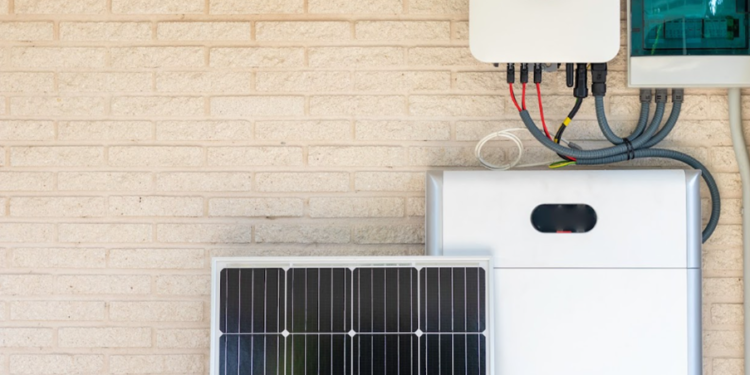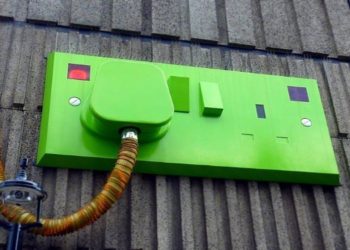You’ve likely heard about solar generators as an emerging green technology, but how much do you really know about how they work? As solar power becomes increasingly mainstream, solar generators are a versatile option for renewable backup power or off-grid living.
This beginner’s guide will walk you through solar generator basics—from components to functionality—to help you decide if investing in one is right for your needs.
Understanding The Components
Solar generators work by combining solar panels with a charge controller and battery bank to collect and store solar energy for on-demand use. But there are a variety of configurations when it comes to consumer models.
- The solar panels, which convert sunlight into electricity, typically range from 50 to over 400 watts. Higher-wattage panels can charge faster but cost more.
- The battery bank stores the energy produced by the panels. This way, power stays available when the sun’s not shining. Batteries are measured in amp-hours for capacity and voltage.
- Inverters convert the DC power from batteries into standard 120V AC power to run devices.
Other components like monitors, outlets, lights, and wheels improve solar generator functionality.
Sizing Your Power Needs
Before purchasing a solar generator, it’s key to understand your anticipated power requirements. Factors like the types of devices you’ll run, usage time per day, frequency of use, and desired days of autonomy impact solar generator sizing. Creating an inventory of devices and their wattages helps you identify your necessary battery bank size and specs.
If incorrectly sized, a solar generator won’t meet your daily energy needs. Overestimating isn’t cost-effective. But a conservatively sized unit leaves room to scale up later if your needs change.
Evaluating Efficiency And Reliability
Today’s solar generators utilize pure sine wave inverters for efficiency—converting more stored power into usable energy with less heat and noise. Efficiency also depends on solar panel and battery quality.
Premium batteries like lithium iron phosphate have a longer lifespan, greater capacity within smaller spaces, and better performance in cold weather than cheaper lead acid varieties. But higher performing components increase costs.
When researching solar generators, look for product specifications on estimated solar harvesting ability based on regional sun hours, total lifetime energy production, and cycles before battery capacity diminishes. Quality engineering improves reliability.
Charging Your Solar Generator
Unlike gas generators, solar generators rely on the sun’s rays to recharge. Charge times range from a couple of hours to 10+ hours, depending upon solar input. Clouds, rain, winter months, and positioning affect light exposure.
While generators automatically draw power from battery banks when solar charging lags, ongoing cloudy or stormy weather can fully drain batteries over time. However, consumers needn’t solely count on the sun.
Many models offer wall charging as a backup. Higher-end generators often include multiple recharge capabilities, maximizing uptime. But increased charging options raise costs.
Key Safety Precautions
While reasonably safe, improper use of solar generators poses some risks. Batteries contain hazardous chemicals under pressure. Overheating, overcharging, physical damage, or manufacturing defects could cause bursting, fires, or explosions. Water contact also creates safety issues.
Carefully follow manufacturer protocols for transport, positioning, connections, charging rates, maintenance, and preventing inadvertent ignition from sparks near venting batteries. Never charge or store solar generators indoors, in vehicles, or near flammables.
Finding The Right Balance Of Features
When evaluating solar generators, you’ll discover myriad options balancing cost, efficiency, capacity, portability, and features. Consider if built-in components like solar controllers, screens, lighting, and outlets provide enough functionality.
Will you utilize the available ports? Do integrated USB ports suffice, or will hardwiring into a breaker box maximize utility?
Compare carrying handles, wheels, foldable panels, and lifting assist capabilities against unit size and weight limitations. Finding models matching performance, price, and features to your situation simplifies off-grid solar usage.
Determining Ideal Location
Solar generator efficacy depends partly upon the environment. Units left shaded for large portions of the day can’t be sufficiently recharged from panels. Nearby obstructions like trees or buildings may limit sunlight exposure as the sun’s position shifts. Dust buildup and debris also decrease solar collection.
Moreover, ensure your location allows panels direct sunlight daily, especially mid-day when sunlight strikes most directly. Northern latitudes receive less intense overall solar radiation in the winter. But even suboptimal sun can effectively charge batteries given adequate panels and time. Track regional peak sun hours and position generators accordingly.
Maintaining Your Solar Generator
All generators require routine maintenance for optimal functionality and battery life. While solar generators largely tend to themselves once situated, following the manufacturer’s maintenance guidance helps prevent avoidable, costly repairs.
Periodically inspecting wiring connections and cleaning solar panels when dirty improves productivity. Test functioning monthly. Swapping out old batteries every 3-5 years as capacity diminishes maintains generator utility over decades rather than years.
Keep batteries charged even during infrequent generator usage, and avoid fully draining batteries when possible to extend longevity. Protecting your investment via basic maintenance saves money and hassle down the road.
Final Thoughts
With climate challenges intensifying, sustainable energy solutions like solar generators offer a practical way for ordinary people to reduce their carbon footprint. As this beginner’s guide demonstrates, solar generators are now more accessible and affordable than ever.
The time for simply hoping for change has passed. Let this be the year you make the switch and do your part by investing in solar!













































































